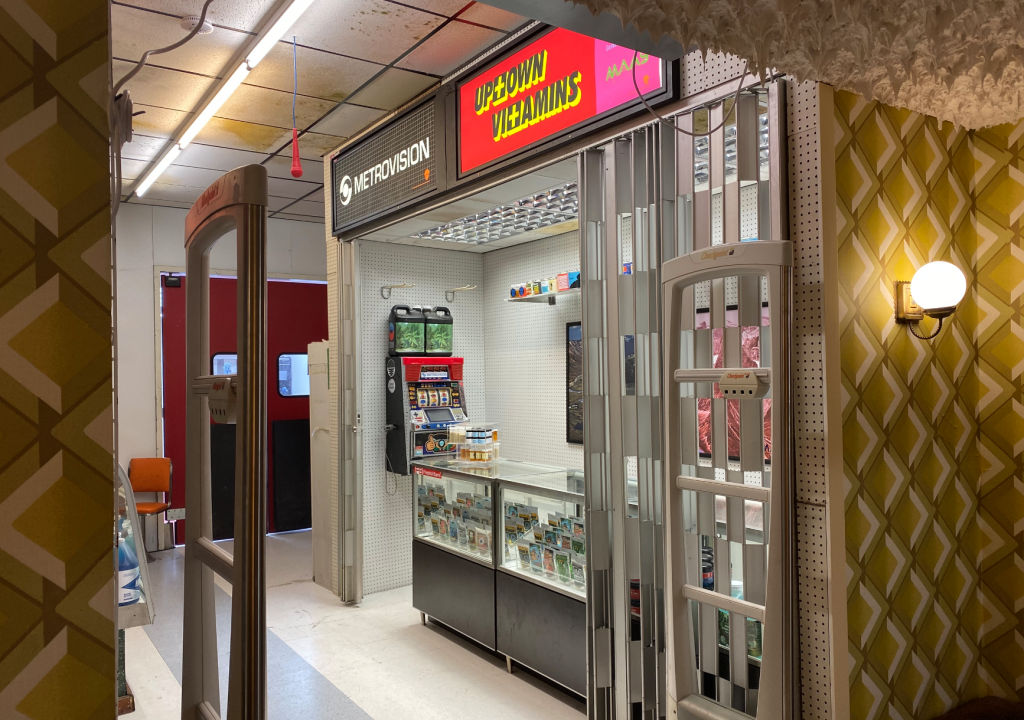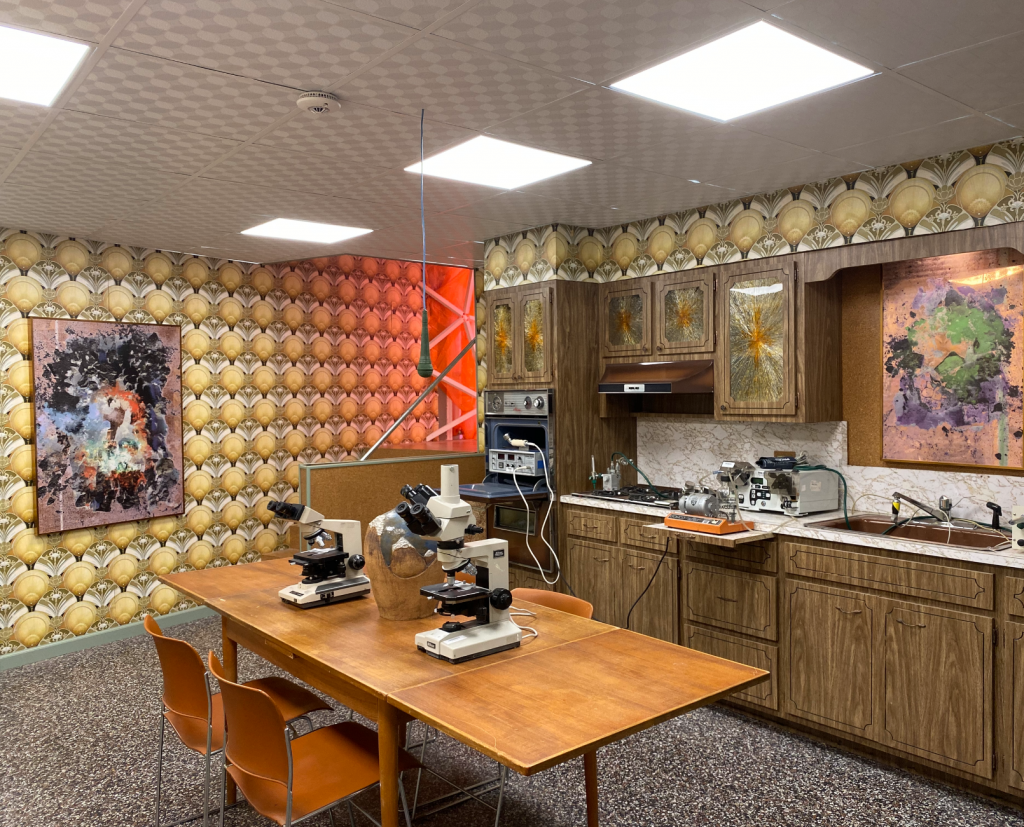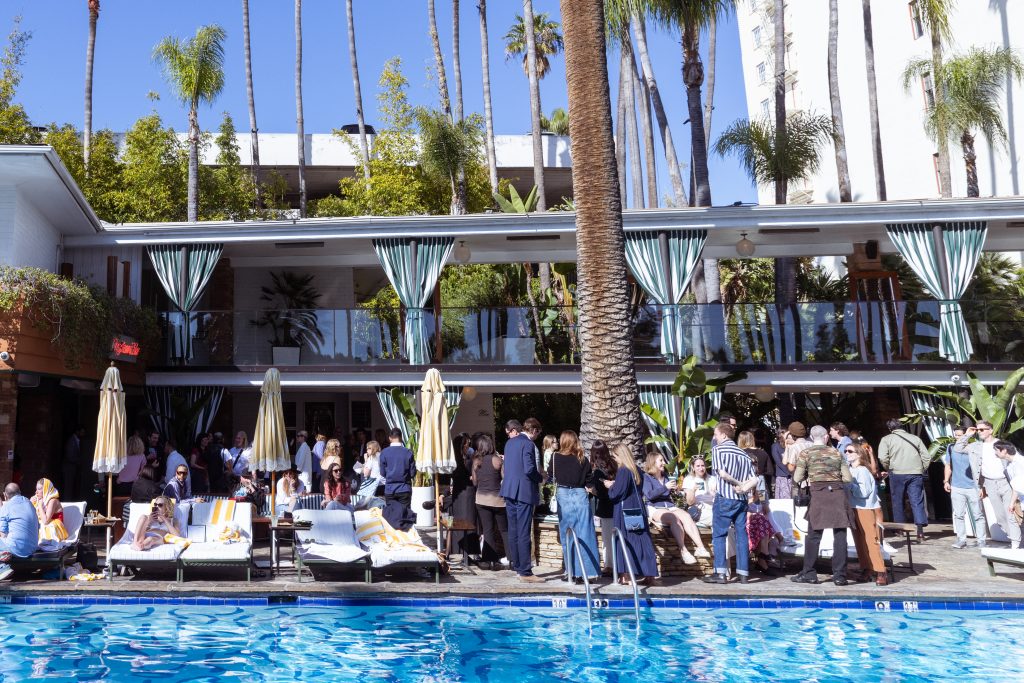Frieze London: Jonah Freeman + Justin Lowe’s COLONY SOUND Exhibition
Diving into a fictional saga throughout an 11-room experience

Stepping inside of Marlborough Gallery during Frieze London is a jarring otherworldly adventure. Jonah Freeman and Justin Lowe have created an 11-room immersive installation (on now through 19 October) that takes up both floors of the gallery. The invite promised a multi-sensory experience of COLONY SOUND, with Ghetto Gastro responsible for “finesse.” A soundtrack created for the installation playing in the rooms has been composed by Elizabeth Hart and Ivan Lee with special guest Lee “Scratch” Perry.

Upon walking into the first room, you are greeted by a young woman in a lab coat offering Uptown Vitamins Elixirs—alcoholic concoctions served in glass flasks emblazoned with the words “Golden Fever: Cloud Trank.” Shuffling about the other rooms are others in lab coats serving patties and Jamaica-inspired coconut bonbons. The group responsible for these elixirs and the food is Ghetto Gastro, a culinary collective from Bronx, New York comprised of Jon Gray, Lester Walker, Malcolm Livingston II, and Pierre Serrao.

COLONY SOUND is the newest chapter in the fictional saga, San San Universe, focusing on an obscure communication system known as The Smile, created in the 20th century. Psychic Driving was a radical psychiatric technique that used looped audio messages as a method to reprogram a subject’s identity. (The procedure was pioneered by Dr Donald Ewen Cameron, funded by the CIA, and served as a precursor to de-patterning— which involved electroshock therapy and large doses of psychedelic drugs.) Claude Shannon and Adita Smiley developed Psychic Driving into a biological network known as The Smile for the intent of mass transmission but later abandoned the project due to unreliability.
The Smile was forgotten for decades until it was discovered by Colony Sound, a youth gang in the Nippono-Caribbean immigrant communities of the San San. They were able to create a pirated media state which allowed global subcultures to rise into new forms of youth rebellion, music, individuality and alternative lifestyles. The installation is a manifestation of the counterculture that rises and different sites of technological invention.

Of the 11 rooms, there is a half-incinerated recording studio, a copper-lined vault designed to block electromagnetic radiation signals, a 1970s living room, a shopping arcade-turned-youth-hangout constructed of homemade ceramics and a telecommunications retail store.

The burnt studio takes its inspiration from Lee “Scratch” Perry’s, which was lost to fire in 2015, as well as a 1979 fire that destroyed his legendary backyard recording studio, Black Ark—the host to sessions by Bob Marley in Kingston, Jamaica.

Within each room are multiple series of art objects that reinterpret The Smile and its cultural byproducts into purely physical and spatial terms. The lines between historical narrative and fiction blur as heavily in this account, as they do in the installation.
Images courtesy Celia Duque Espiau












